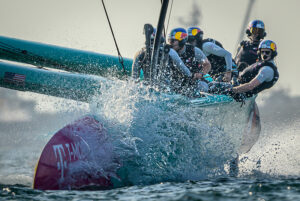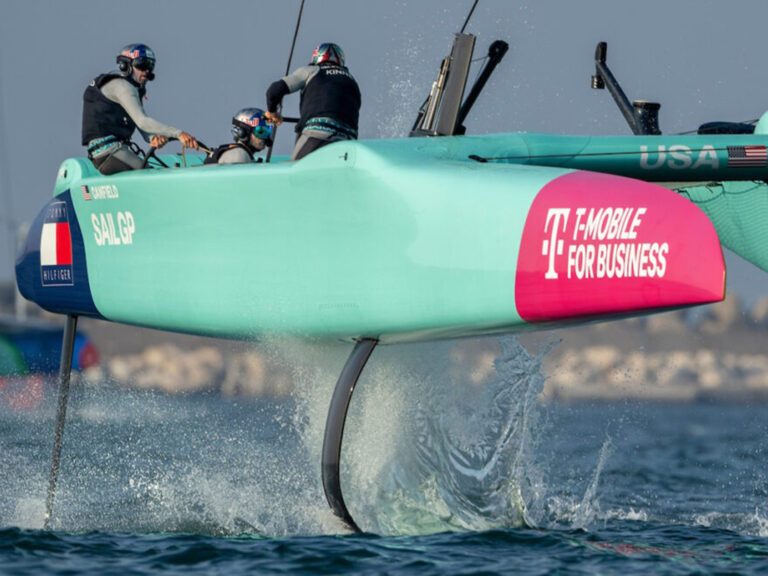Making sure they had the first America’s Cup news of the day, the Team New Zealand brass convened a press conference at the Royal New Zealand Yacht Squadron at 8 a.m. this morning to announce tentative plans to challenge for the 32nd America’s Cup. To help with the transition between the 2003 defense and the next challenge–and avoid the massive drain of talent that occurred after the 2000 defense–the New Zealand government has committed $3.2 million to help re-sign key team members and may kick in significantly more during the course of the campaign. According to the press release, the level of the government’s commitment to the team depends on an “assessment of the potential economic benefits that can be leveraged off the next regatta in Europe. It will also depend on Team New Zealand’s ability to raise substantial funding from the private sector, both from here and overseas.””Team New Zealand is a young team,” said Trevor Mallard, the minister for the America’s Cup, who announced the deal. “It was a team that was pretty much gutted three years ago and I’m of the opinion they can develop and win the Louis Vuitton Cup, or whatever it becomes, and the America’s Cup. It will be an expensive exercise and it will be major challenge to get the funding together.”According to Team New Zealand CEO Ross Blackman, the early estimates out of the Alinghi camp are of challenger budgets in the neighborhood of $75 million to $80 million. This, added Blackman, “is considerably more than we’ve had to spend this time around. We have a tradition of winning the Cup with less money. But, will it cost more? Of course it will.” One advantage that will help offset the increase, according to syndicate chief and design coordinator Tom Schnackenberg, is that the advertising potential of a syndicate competing in Europe is greater than it was in Auckland, especially in regards to the return generated for New Zealand tourism and trade.The syndicate doesn’t have a specific time frame for signing up sponsors, but Blackman said that he has received some commitments from sponsors. One could make a public announcement within the next 24 hours. In the meantime Team New Zealand will embark on a internal assessment of their failed defense. “We’re undergoing a lot of critical analysis of things we might have done better,” said Schnackenberg. “We’re not going to be making public our internal findings because we’re an ongoing concern. The lessons, even structural little lessons, are for us to know. We paid for them, they’re now our assets.”There’s a common thread in a lot of things that occurred. We were very gung-ho in the design of the yacht, the rig, its appendages. We felt, and rightly so, that we were up against a very formidable challenge and we pushed the design envelope. The other thing that comes through is there’s no problem with the workmanship around the campaign. The third thing I can say is, in spite of various stories going around, that nothing happened to NZL-82 that you didn’t see on television. No collisions between the boats, no rudder bearings leaking. We pushed the boat harder than we had in our own in-house racing. We came up short a couple of times.”









